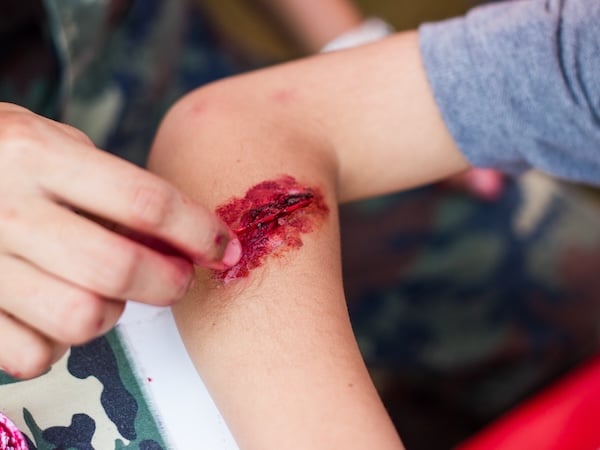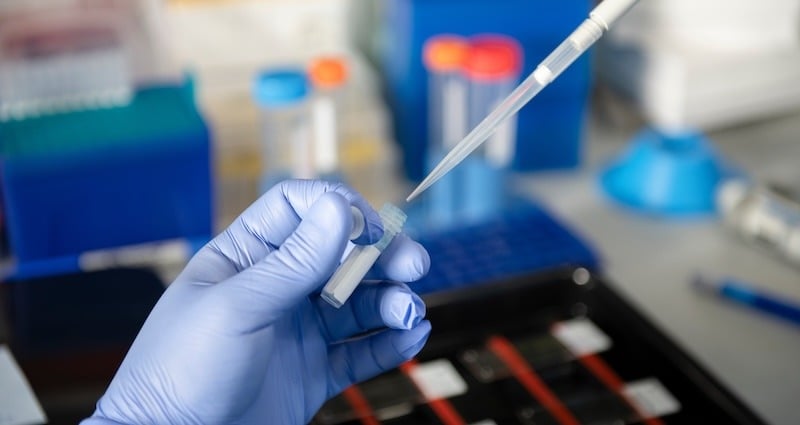
Measuring wounds accurately is crucial in medical and forensic settings in order to ensure that the most effective treatments and analyses are employed. But how do you measure a wound correctly? What tools are used to measure wounds? Are there any tips or processes I should be following?
All great questions – and we’re here to help answer them!
Puritan Medical Products is proud to introduce our latest resource, a detailed wound measurement guide that empowers healthcare professionals with the knowledge and tools needed for precise wound assessment. As you dive into the guide, consider this blog post as a supplementary resource. Read on for more information!
Why is wound measurement important?
Wound measurement is an integral part of patient care, aiding in the prevention of infection, assessing the effectiveness of treatment strategies, and, ultimately, improving longer term patient health outcomes.
Wound measuring for medical applications
Wound measuring in medical applications is an indispensable practice that plays a critical role in patient care and recovery. Accurate measurement of wounds is essential for evaluating the healing process, determining the most effective treatment plans, and preventing potential complications such as infections or delayed healing.
By tracking changes in the size, depth, and other characteristics of a wound over time, healthcare professionals can make informed decisions about wound management strategies, tailor treatments to individual patient needs, and enhance overall outcomes. Moreover, precise wound measurement allows for better communication among care teams, facilitates research and the development of new treatments, and ultimately supports the goal of achieving the best possible patient care.
Wound measuring for forensics
In forensic applications, wound measurement is a vital component of crime scene investigation and legal proceedings. Precise measurement of wounds can provide critical insights into the cause and manner of death, the type of weapon used, and the sequence of events leading to an injury. Forensic experts rely on accurate wound dimensions to reconstruct crime scenes, evaluate self-defense claims, and distinguish between accidental, suicidal, and homicidal injuries.
By analyzing wound characteristics such as size, depth, and shape, forensic professionals can gather substantial evidence that may help establish timelines, identify perpetrators, and contribute to the administration of justice. The meticulous nature of wound measurement in forensics not only aids in solving crimes but also plays a crucial role in ensuring that legal outcomes are based on concrete, objective evidence. Given the nature of forensics, non-sterile tools can be used.
4 tools you need to measure a wound
Measuring a wound accurately requires specific tools. Here’s a quick guide to what you'll need:
1. Wound Measuring Device (a.k.a. “DM stick”)
A wound measuring device (also known as a “DM stick”) is essential for obtaining accurate dimensions of the wound. Puritan offers specialized measuring devices designed for this task. Explore our options like the 6" Sterile Foam Tip Polystyrene Wound Measuring Device and the 6" Foam Tip Polystyrene Wound Measuring Device, which are crafted to precise measurements through machine engineering.
The DM stick is a design developed by two experienced long term care nurses, Davis and Mangels. The proper name is the Davis-Mangel Stick, hence the name, though the industry had called plain sticks used to assess wounds as 'dumb sticks' and DM sounded close to these inventors.
These devices are available in both sterile and non-sterile
2. Calculator
Use a calculator to ensure you’re accurately calculating the area and volume of wounds, especially when dealing with irregular shapes or depths.
3. Tracking Materials
Recording the details of each measurement is crucial. Whether you prefer digital databases or traditional paper records, maintaining a consistent and organized log is key.
4. Tracing Materials
In some cases, tracing the outline of a wound can help with monitoring changes over time and providing visual references.
How to choose the right wound measuring device
When selecting a wound measuring device, consider the following benefits of DM sticks:
- Material Types: Look for devices with a foam swab tip for patient comfort and a polystyrene handle for ease of use.
- Design: Choose a device that is calibrated from end to end (like the DM stick made with a soft foam tip) to assure precise measurement.
- Tip Shape: An indented tip at 0.5 and 1.0 cm can help with precise measurement.
- Sterility: Ideal for sensitive wounds such as pressure ulcers, and surgical wounds.
- Measurement: Choose a device with graduated measurement markings in centimeters and millimeters for accuracy.
- Packaging: Quality packaging is crucial to minimize the risk of contamination.
- USA Made: Opt for devices manufactured in the USA for guaranteed quality and reliability.
How to measure a wound: step-by-step guide
Our wound measurement guide provides a detailed, step-by-step process for measuring wounds accurately. Follow the outlined steps to ensure you're capturing all the necessary information for effective wound management. Here’s a condensed version of what you’ll find within the guide:
Step 1: Measure the length
Measure the length of the wound. Length of the wound is determined to be parallel directionally with the patient's head to their toe. For context, this will be the longest point.
Step 2: Measure the width
Next, measure the width of the wound from side-to-side at its widest point. This point should be perpendicular to the length directionally and form a “+” shape.
Step 3: Measure the depth
Measure the depth of the wound by inserting the foam tip into the deepest part of the wound.
Step 4: Calculate the overall surface area
To calculate the overall surface area of the wound, multiply the length and width together. For further measurement details, download the wound measurement guide.
Step 5: Record your findings
Record all measurements each time you measure so you can properly monitor and assess wound status.
Expert tips for wound measurement
To enhance the accuracy and efficiency of your wound measurement practices, consider these quick tips:
- Always measure in a well-lit area to ensure visibility.
- Use consistent pressure when applying the measuring device to avoid distortion.
- Document every measurement with photos when possible for a visual record of progress.
Why choose Puritan for your wound measurement device
Puritan Medical Products stands out as the leading choice for professional-grade wound measuring devices. Our commitment to quality, consistency, and innovation ensures that technicians have access to the tools they need for precise wound assessment and care.
Choosing the right tools and following best practices for wound measurement can significantly impact patient care and treatment outcomes. With Puritan's comprehensive guide and specialized products, you're well-equipped to tackle the challenges of wound measurement with confidence and precision.
If you need support with finding the right tools for your wound measurement needs, reach out to our sales team. We’re happy to help!




